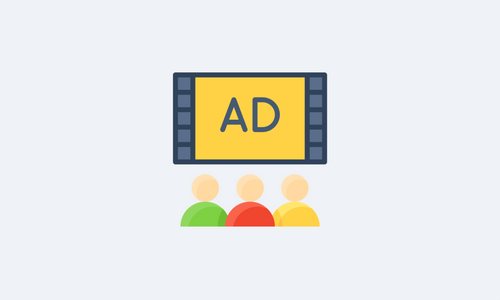Current Challenges and Tendencies of Online Advertising
The online advertising ecosystem is continuously evolving and expanding. 15-20 years ago the job of searching for advertisers and negotiating banner placements could be handled by one person. Now content monetization requires teamwork, and, in the case of large publishers, even several teams are involved, though the general requirements of advertising remain the same. In September IAB issued another Advertising Quality Buyer’s Guide, according to which the key advertising quality metrics are “viewability, brand safety, and fraud.” In other words, ads are good at the right time, in the right place and for the right (real) audience.
At the same time, ad environment and mechanisms of delivery to the end user have come through significant changes. Let us leave targeting and ad delivery methods for marketing people and focus on the challenges that appear in the process of interaction between advertiser, website owner, and the user as well as different possible mediator platforms between them.
Audience behavior has changed considerably during the recent years. Mobile internet allows staying online without limits, and most of this time we spend on social networks. These platforms have a deep knowledge of their audiences and have become a trustworthy partner in the online advertising sphere. The market of mobile applications continues to grow, and this is another platform for ad placements. Mobile devices have one unquestioned advantage over PCs – identifiers (Apple’s IDFA and Android’s Google Advertising ID) that do not require cookies synchronization.
But at the same time, mobile device users often leave the page before the ad is loaded. Ad formats used in mobile (like videos, blocking the entire screen) cause more irritation than they do on the PC. Besides, the existing mechanisms of inventory selling have to be adopted for website mobile versions.
Video advertising perspectives have expanded broadly, especially with the emergence of Interactive TV, the audience of which is continuously growing and the video ads are watched to the completion.
Online advertising market volumes are increasing at a fast pace, but simultaneously more and more publishers are choosing alternative ways of content monetization. Their attitude towards ads is based on the formula “less is more.” Among revenue sources, there can be paywalls, offers of unique content or services (such as reports, research, courses, webinars), affiliative links, advertorials, native ads and so on. Website audience data has become a new revenue source. Nonetheless, banner ads have been and remain one of the principle monetization channels. At that, mechanisms of the inventory sale have significantly changed over the last several years.
The share of direct sales has been decreasing. The auction model is at its peak of popularity. According to eMarketer, in the USA at the end of September 2018, the programmatic segment showed the maximum growth and header bidding had the lion’s share of the market. As for Russia, the largest Russian SSPs are not integrated into Prebid.js or Exchange Bidding, while AdFox (Yandex) and Google Ad Manager (ex-DFP), most popular on the Russian online advertising market, have proprietary solutions based on HB. That is why penetration of header bidding into the market without internal Russian auctions is far behind the US.
The initial aim of programmatic was to make competition, price-building and yield generation transparent. At the same time, high-quality algorithms performance require a well-developed infrastructure and continuous investments, consuming plenty of resources. After GDPR regulations have been introduced, the programmatic market reduced by 40% – being a complicated system itself, it was not able to quickly adapt to the new external conditions. To save their reputation the New York Times refused to use programmatic in Europe completely. In general, together with the growing interest in the brand image grows the attraction of the direct interaction between advertiser and the website. This is also inspired by their mutual consent to limit the number of partners
Added to this, SSP, DSP, DMP, Ad Exchange and other services take their share from each bid which is beneficial neither for websites nor for advertisers, especially considering the fact that platforms-mediators sometimes conceal real data on the bid conditions. This, for example, was the reason why the Guardian sued the Rubicon Project: the publisher received just one-third of the total revenue from their inventory.
Fraud remains a vital problem (and the last IAB-standard is another confirmation of this). Today there is a set of different tactics for fighting fraud. On a short distance black- and whitelists are helpful, as, according to Fraudlogix, the major part of the fraudulent traffic comes from a tiny percent of domains. Another initiative, Ads.txt, includes a whitelist into the inventory sales process. Certified Against Fraud Program (TAG) gives access to a blacklist of IP-addresses, a stand-alone payment system and obliges websites to share the volumes of their sourced traffic. In 2017 inside TAG channels the amounts of fake traffic fell to 1,48%, what is 83% less than the average figures on the market (8,83-12,03%).
The question of user identification is essential not only for fighting fraud. Online ads today are narrow-targeted. When there are multiple data sources and the data itself is a highly valuable resource, synchronization of data between market players is added to the list of challenges. No wonder that programmatic technologies are developing towards data integration (Server Side Header Bidding).
As soon as the focus of advertisers’ attention shifted from the website to its visitors, the data on these visitors turned into the source of revenue. While industry giants like Google, Apple, Facebook and Amazon, as well as Mail.ru and Yandex on the Russian market, “building garden walls,” publishers are working on their own ecosystem and are taking the processing of proprietary data into their own hands. Besides the fact that this information is the most easily obtainable, actual and valuable, there has been one more factor boosting publishers.
In the light of the recent news on user data leakage and fraudulent usage, the government institutions have set a new challenge – user data processing legislative regulations are to be developed, and are being developed, immediately.
That is why the US market has to rapidly adapt to the new situation. According to TrustArc Research, 26% of all the companies will not be able to introduce all necessary changes even by the end of 2018. Some US publishers are stopping their activities in the USA, anticipating huge penalties. In the USA itself, the California Consumer Privacy Act of 2018 has been issued. A similar bill but with more vague statements putting restrictions even on non-personal data processing has gone out in New Jersey and it is likely that other states will follow this route. Identical bills are being developed in India and Brazil.
Although such regulations are beneficial for the advertising environment, the loss of such instrument as additional data sources means poorer targeting (at least on a short-term horizon), an adverse effect on middle and small publishers, and on the online advertising ecosystem balance in general. At the same time, such regulations do the least harm to the monopolists as they:
- are capable of paying these penalties,
- have access to the data despite all the prohibitions.
The external control for the technical part of the media environment is a separate question. Online advertising market players are eventually interested in transparent and careful user data management, as when users are dissatisfied, they simply block the ads. According to PageFair, the number of computers with installed ad-blockers grew globally from 21 mln to 236 mln from 2010 to 2017. For mobile devices, the dynamics are even higher: from 145 to 380 mln for 2015-2017.
This is why the market has taken proactive measures. IAB and Coalition for Better Ads started a program on developing global online advertising standards in 2016 that later entered Google audit: it blocks the ad if it does not conform to the standards and the domain has not done corresponding changes within 30 days. Likewise measures against fraud, fake banners, and other violations are taken by other companies too. For instance, IAB Russia has issued a mechanism “Safe Harbour” protecting the ads from filtering for the websites that conform to the standards.
A drastic decision to block 3rd party advertising cookies was made in autumn by Mozilla executives. IAB entered into a debate about if it was fair to deprive users of the right to manage their data. On October 2nd, 2018 the bureau announced the launch of the new data collection technology based on the blockchain. The technology would allow users to decide what data to share and the companies to monitor and use these data. At the other end of the spectrum are startups that do not only actively collect user data but also pay their audiences for interactions with the ads.
The root of many problems, user data processing, in particular, lies in the conflict of publisher and advertiser interests, meaning that they will hardly ever be eliminated. At least we will not see a global DMP sharing everyone’s data with everyone soon.
Concurrently, substantial progress has been made in settling a number of questions, challenging for all the participants of the online advertising market - primarily due to mutual efforts. There is now hope for solving the problem of fraud and ad blocking, and more and more market players are abiding by the standards which means that the share of high-quality content is growing.
Changes influencing the market structure - mobile traffic, new media, legislation - require publishers to think over the relations with their audiences, and thus open new perspectives. Sometimes the responses of the participants of the online advertising market to the challenges the industry is facing are diametrically opposite. This makes it even more interesting to see how the situation will develop in the future.





